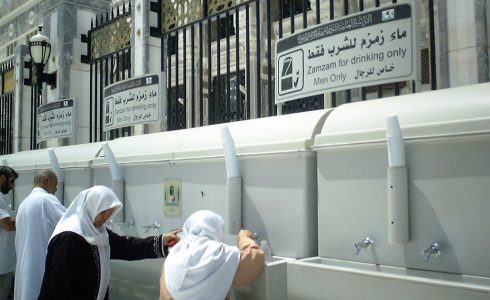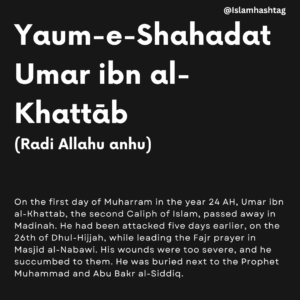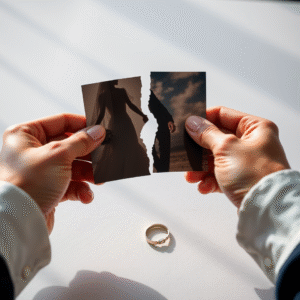“The water of Zamzam is for whatever purpose it is drunk for”
Contents hide
The Miracle of Zamzam Well
Do You Know that Zamzam is the miracle water that was dug by an Angel – Angel Jibrael AS for Prophet Islamel AS .The Well is preserved till date and feeds millions of pilgrims every Year . Many even carry this water back to their homeland and distribute it to family and friends when they return from Hajj .Hadith on drinking Zamzam water
The scholars (may Allaah have mercy on them) agreed that it is mustahabb (recommended) for pilgrims on Hajj and ‘Umrah in particular, and for all Muslims in general, to drink Zamzam water, because of the saheeh hadeeth in which the Prophet (peace and blessings of Allaah be upon him) is reported to have drunk the water of Zamzam.- (Reported by al-Bukhaari, 3/492). According to the hadeeth of Abu Dharr (may Allaah be pleased with him), the Prophet (peace and blessings of Allaah be upon him) said concerning the water of Zamzam, “It is a blessing, and it is food that satisfies.”
- (Reported by Muslim, 4/1922). Al-Tayaalisi (61) added, in a version that he narrated: “and a cure for the sick.” I.e., drinking the water of Zamzam means that a person does not need to eat, and it will cure his sickness – but this is when he drinks it with faith and sincerity, as proven in the hadeeth of Abu Dharr al-Ghifaari who stayed in Makkah for a month without any nourishment except Zamzam water
- Al-‘Allaamah al-Abbi (may Allaah have mercy on him) said: “(The water) is for whatever purpose it is drunk for, and Allaah made it food and drink for Ismaa’eel and his mother Haajar.”
- Ibn al-Mubaarak entered Zamzam and said, “O Allaah, Ibn al-Mu’ammal told me, from Abu’l-Zubayr from Jaabir that the Messenger of Allaah (peace and blessings of Allaah be upon him) said: ‘The water of Zamzam is for whatever purpose it is drunk for,’ so, O Allaah, I am drinking it (to quench) my thirst on the Day of Resurrection.”
Different names of Zamzam water
Zamzam is known by 11 different names: Zamzam, Maktumah, Madhnunah, Shaba’h, Baqya, Al-Rawaa, Rakhat Jibreel, Shifa Saqam, Twa’amu Tu’m, Hajirat abdul Muttalib and Hazmetul-JibreelRead : Jabal An NoorLocation of Zamzam Well
The well of zamzam is located within Wadi Ibrahim alluvium. The well is about 30.5 meter deep and it was hand-dug and has 2.66 meter internal diameter. The circumference of the opening is about 1.8 meter.The well pumps up to 18.5 liters per second. In 2010, King Abdullah bin Abdulaziz launched a project to build the Zamzam Water Treatment and Filtration station. The station is located 4.5 km away from Al-Masjid Al-Haram. from it 120 tons of Zamzam water is transported on a daily basis to the tanks at Al-Masjid al-Nabawi in Madinah!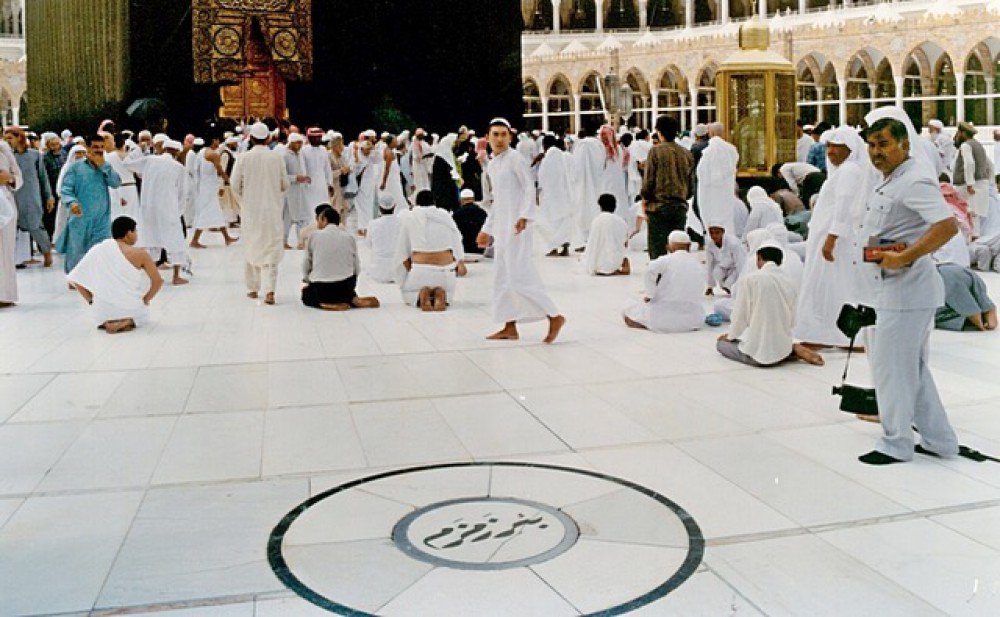
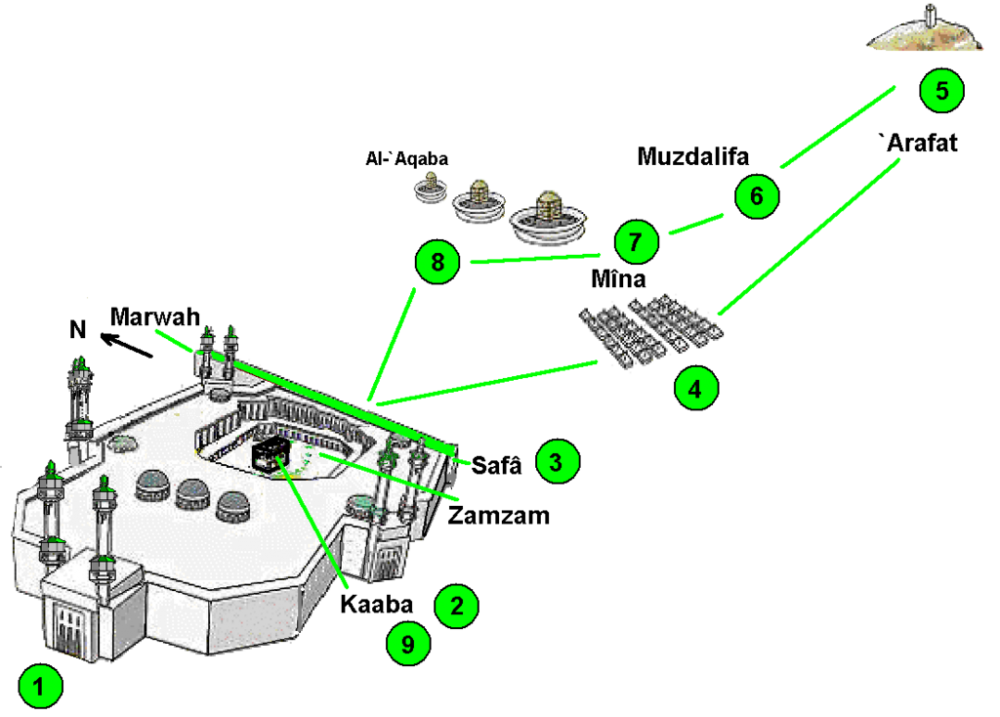
The Miracle of Zamzam Well
According to Arab historians, the Zamzam Well, except for a few periods when it became dry or was buried under sand, has been in use for around 4000 years. The well marks the site of a spring that, miraculously, had issued forth from a barren and desolate wadi (non perennial stream) where the Prophet Ibrahim (Peace be upon him-pbuh), under Allah’s command, had left his wife Hajar and their infant son Ismail (pbuh).
In her desperate search for water, Hajar ran seven times back and forth in the scorching heat between the two hills of Safa and Marwa to look for water for Ismail (pbuh), who was dying of thirst, and also to look for passing karawans for help.. Allah, in His mercy, sent the Angel Gabriel, who scraped the ground, causing the spring to appear. On finding the spring, and fearing that it might run out of water, Hajar enclosed it in sand and stones. The name Zamzam originates from the phrase Zomë Zomë, meaning ‘stop flowing’, a command repeated by Hajar during her attempt to contain the spring water. The area around the spring, which was later converted to a well, became a resting place for caravans, and eventually grew into the trading city of Makkah, birthplace of the Prophet Muhammad (pbuh).
Prophet Ibrahim (pbuh) later returned to rebuild Ka’ba, the first Bait-ul-Allah (House of Allah), originally said to have been built by Adam (pbuh). It is the holiest Muslim shrine.
Hadith on Building of Kaaba
Narrated Ibn Abbas: : The first lady to use a girdle was the mother of Ishmael. She used a girdle so that she might hide her tracks from Sarah. Abraham brought her and her son Ishmael while she was suckling him, to a place near the Ka`ba under a tree on the spot of Zamzam, at the highest place in the mosque.During those days there was nobody in Mecca, nor was there any water So he made them sit over there and placed near them a leather bag containing some dates, and a small water-skin containing some water, and set out homeward. Ishmael’s mother followed him saying, “O Abraham! Where are you going, leaving us in this valley where there is no person whose company we may enjoy, nor is there anything (to enjoy)?” She repeated that to him many times, but he did not look back at her Then she asked him, “Has Allah ordered you to do so?” He said, “Yes.” She said, “Then He will not neglect us,” and returned while Abraham proceeded onwards, and on reaching the Thaniya where they could not see him, he faced the Ka`ba, and raising both hands, invoked Allah saying the following prayers: ‘O our Lord! I have made some of my offspring dwell in a valley without cultivation, by Your Sacred House (Ka`ba at Mecca) in order, O our Lord, that they may offer prayer perfectly. So fill some hearts among men with love towards them, and (O Allah) provide them with fruits, so that they may give thanks.’ (14.37)Ishmael’s mother went on suckling Ishmael and drinking from the water (she had). When the water in the water-skin had all been used up, she became thirsty and her child also became thirsty. She started looking at him (i.e. Ishmael) tossing in agony; She left him, for she could not endure looking at him, and found that the mountain of Safa was the nearest mountain to her on that land. She stood on it and started looking at the valley keenly so that she might see somebody, but she could not see anybody. Then she descended from Safa and when she reached the valley, she tucked up her robe and ran in the valley like a person in distress and trouble, till she crossed the valley and reached the Marwa mountain where she stood and started looking, expecting to see somebody, but she could not see anybody. She repeated that (running between Safa and Marwa) seven times.”The Prophet (ﷺ) said, “This is the source of the tradition of the walking of people between them (i.e. Safa and Marwa). When she reached the Marwa (for the last time) she heard a voice and she asked herself to be quiet and listened attentively. She heard the voice again and said, ‘O, (whoever you may be)! You have made me hear your voice; have you got something to help me?” And behold! She saw an angel at the place of Zamzam, digging the earth with his heel (or his wing), till water flowed from that place. She started to make something like a basin around it, using her hand in this way, and started filling her water-skin with water with her hands, and the water was flowing out after she had scooped some of it.”The Prophet (ﷺ) added, “May Allah bestow Mercy on Ishmael’s mother! Had she let the Zamzam (flow without trying to control it) (or had she not scooped from that water) (to fill her water-skin), Zamzam would have been a stream flowing on the surface of the earth.” The Prophet (ﷺ) further added, “Then she drank (water) and suckled her child. The angel said to her, ‘Don’t be afraid of being neglected, for this is the House of Allah which will be built by this boy and his father, and Allah never neglects His people.’ The House (i.e. Ka`ba) at that time was on a high place resembling a hillock, and when torrents came, they flowed to its right and left. She lived in that way till some people from the tribe of Jurhum or a family from Jurhum passed by her and her child, as they (i.e. the Jurhum people) were coming through the way of Kada’. They landed in the lower part of Mecca where they saw a bird that had the habit of flying around water and not leaving it.They said, ‘This bird must be flying around water, though we know that there is no water in this valley.’ They sent one or two messengers who discovered the source of water, and returned to inform them of the water. So, they all came (towards the water).” The Prophet (ﷺ) added, “Ishmael’s mother was sitting near the water. They asked her, ‘Do you allow us to stay with you?” She replied, ‘Yes, but you will have no right to possess the water.’They agreed to that.” The Prophet (ﷺ) further said, “Ishmael’s mother was pleased with the whole situation as she used to love to enjoy the company of the people. So, they settled there, and later on they sent for their families who came and settled with them so that some families became permanent residents there.The child (i.e. Ishmael) grew up and learnt Arabic from them and (his virtues) caused them to love and admire him as he grew up, and when he reached the age of puberty they made him marry a woman from amongst them. After Ishmael’s mother had died, Abraham came after Ishmael’s marriage in order to see his family that he had left before, but he did not find Ishmael there. When he asked Ishmael’s wife about him, she replied, ‘He has gone in search of our livelihood.’ Then he asked her about their way of living and their condition, and she replied, ‘We are living in misery; we are living in hardship and destitution,’ complaining to him. He said, ‘When your husband returns, convey my salutation to him and tell him to change the threshold of the gate (of his house).’When Ishmael came, he seemed to have felt something unusual, so he asked his wife, ‘Has anyone visited you?’ She replied, ‘Yes, an old man of so-and-so description came and asked me about you and I informed him, and he asked about our state of living, and I told him that we were living in a hardship and poverty.’ On that Ishmael said, ‘Did he advise you anything?’ She replied, ‘Yes, he told me to convey his salutation to you and to tell you to change the threshold of your gate.’ Ishmael said, ‘It was my father, and he has ordered me to divorce you. Go back to your family.’ So, Ishmael divorced her and married another woman from amongst them (i.e. Jurhum).Then Abraham stayed away from them for a period as long as Allah wished and called on them again but did not find Ishmael. So he came to Ishmael’s wife and asked her about Ishmael. She said, ‘He has gone in search of our livelihood.’ Abraham asked her, ‘How are you getting on?’ asking her about their sustenance and living. She replied, ‘We are prosperous and well-off (i.e. we have everything in abundance).’ Then she thanked Allah’ Abraham said, ‘What kind of food do you eat?’ She said. ‘Meat.’ He said, ‘What do you drink?’ She said, ‘Water.” He said, “O Allah! Bless their meat and water.” The Prophet added, “At that time they did not have grain, and if they had grain, he would have also invoked Allah to bless it.” The Prophet (ﷺ) added, “If somebody has only these two things as his sustenance, his health and disposition will be badly affected, unless he lives in Mecca.” The Prophet (ﷺ) added,” Then Abraham said Ishmael’s wife, “When your husband comes, give my regards to him and tell him that he should keep firm the threshold of his gate.’When Ishmael came back, he asked his wife, ‘Did anyone call on you?’ She replied, ‘Yes, a good-looking old man came to me,’ so she praised him and added. ‘He asked about you, and I informed him, and he asked about our livelihood and I told him that we were in a good condition.’ Ishmael asked her, ‘Did he give you any piece of advice?’ She said, ‘Yes, he told me to give his regards to you and ordered that you should keep firm the threshold of your gate.’ On that Ishmael said, ‘It was my father, and you are the threshold (of the gate). He has ordered me to keep you with me.’Then Abraham AS stayed away from them for a period as long as Allah wished, and called on them afterwards. He saw Ishmael under a tree near Zamzam, sharpening his arrows. When he saw Abraham, he rose up to welcome him (and they greeted each other as a father does with his son or a son does with his father). Abraham said, ‘O Ishmael! Allah has given me an order.’Ishmael said, ‘Do what your Lord has ordered you to do.’ Abraham asked, ‘Will you help me?’ Ishmael said, ‘I will help you.’ Abraham said, Allah has ordered me to build a house here,’ pointing to a hillock higher than the land surrounding it.”The Prophet (ﷺ) added, “Then they raised the foundations of the House (i.e. the Ka`ba). Ishmael brought the stones and Abraham was building, and when the walls became high, Ishmael brought this stone and put it for Abraham who stood over it and carried on building, while Ishmael was handing him the stones, and both of them were saying,
‘O our Lord! Accept (this service) from us, Verily, You are the All-Hearing, the All-Knowing.’
The Prophet (ﷺ) added, “Then both of them went on building and going round the Ka`ba saying: O our Lord ! Accept (this service) from us, Verily, You are the All-Hearing, the All-Knowing.” (2.127)Ref : Sahih al-Bukhari 3364History of Rediscovery of Zamzam well:
Structure and hydrogeology of the Well
Zamzam Well is hand-dug and is about 30.5 m deep, with an internal diameter ranging from 1.08 to 2.66 m. Hydrogeologically, the well lies within Wadi Ibrahim, which runs through the Holy City of Makkah, and taps groundwater from the wadi alluvium and, to a much lesser extent, the underlying fresh bedrock. The well is now housed in a basement room, protected by glass panels that allow a clear view of the well.
Electric pumps are used to draw water from the well, replacing the ropes and buckets of the olden days. No visitor is allowed to enter the Zamzam Well room and surroundings. Outside this room, there was a service area, where cold Zamzam water fountains and dispensing containers were provided for drinking purposes. Recently, the Al-Haram Tawaf area has been extended to cover the entrance to this area and it is no more accessible to pilgrims. Instead, cold Zamzam water fountains and dispensing containers are now placed at the periphery of Tawaf area and within the Grand Mosque, and open piazzas or Al-Sahat surrounding the Al-Haram building Moreover, a bottling plant and public distribution Sabeel have been established at Kudai, south of Al-Haram for the visitors who want to carry Zamzam home.
The upper 13.5 m of the well is excavated in the sandy alluvium of the Wadi Ibrahim, and the lower 17.0 m in the underlying diorite bedrock. In between lies a 0.5 m thick highly permeable weathered rock. Most of the alluvial section of the well is lined with stone masonry except for the uppermost 1 m, which has a reinforced concrete collar. The weathered rock section is lined with stone and it is this section that provides the main water entry into the well.
Zamzam water entering the well from the stony horizon
Monitoring and managing demand to prevent depletion of zamzam
With the increasing accessibility of affordable air travel, the number of Muslims visiting the Holy City of Makkah has risen dramatically over the past 3 decades, from around 400,000 per year in the mid seventies to over several millions since the Mid Nineties.
Water levels in the Zamzam Well were formerly monitored by a simple drum hydrograph, but this has now been replaced by a more sophisticated real-time multi-parameter monitoring system, which makes digital records of water level, electric conductivity, pH, Eh and Temperature, etc. The Datalogger is accessible by SGS through phone cable and the data can be examined and downloaded without going to the well. A network of other monitoring wells has also been installed throughout Wadi Ibrahim to monitor the response of the entire aquifer system to the recharge and discharge. Some of these wells are fitted with automatic digital water level recorders.
Datalogger installed near the well to monitor water level, temperature, electric conductivity, TDS, pH, density, etc.
Documentary on Zamzam:
More about Zamzam from the Caretakers of Zamzam
Reference :- Saudi geographical survey
- Study Notes
- Biography of Prophet
- Images and Video sourced from google .
Discover more from Islam Hashtag
Subscribe to get the latest posts sent to your email.

